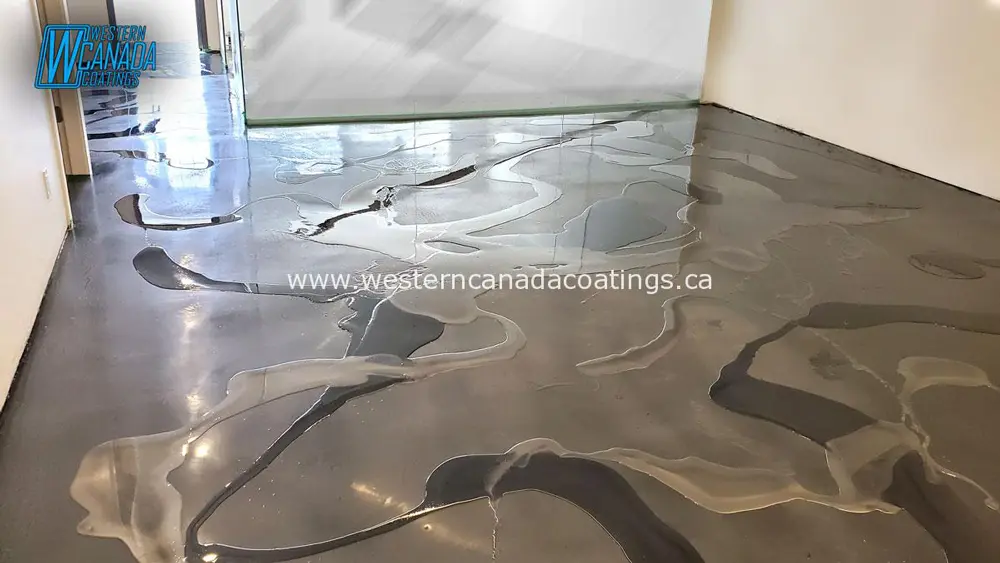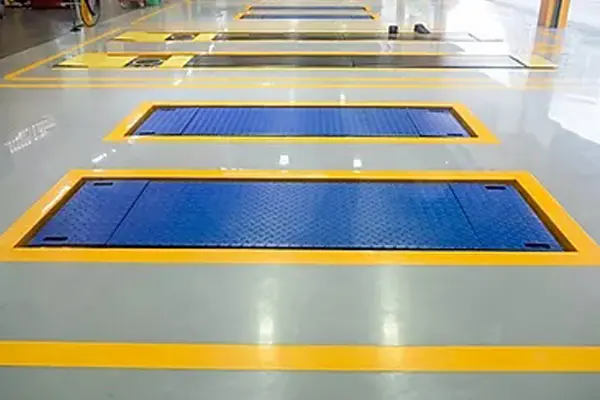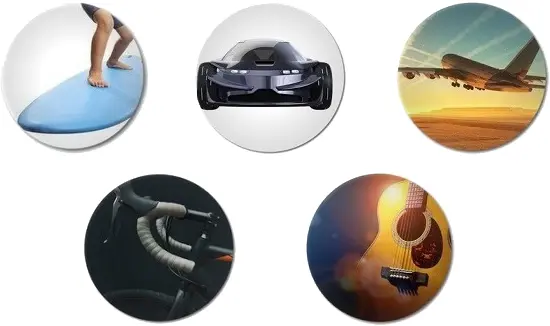The first thing to know is that epoxy is a colloquial name for the epoxide functional group or any of the basic components or cured end products of epoxy resins. Epoxy resins, also known as polyepoxides, are a class of reactive prepolymers and polymers which contain epoxide groups.

Epoxy resins may be reacted (cross-linked) either with themselves through catalytic homopolymerisation, or with a wide range of co-reactants including polyfunctional amines, acids (and acid anhydrides), phenols, alcohols and thiols (usually called mercaptans). These co-reactants are often referred to as hardeners or curatives, and the cross-linking reaction is commonly referred to as curing.
The reaction of polyepoxides with themselves or with polyfunctional hardeners forms a thermosetting polymer, often with favourable mechanical properties and high thermal and chemical resistance. Epoxy has a wide range of applications, including metal coatings, use in electronics/electrical components/LEDs, high tension electrical insulators, paintbrush manufacturing, fibre-reinforced plastic materials, and adhesives for structural and other purposes.
What is Epoxy Resin Made of
Epoxy
Epoxy is merely cured epoxy resin. Or in other words, epoxy resin is epoxy adhesive in its liquid form. For any epoxy, there are two primary parts to the equation: the resin and the curing agent. When the resin and the curing agent react together, the hardening process ensues.
Resin
The resin itself is made of bisphenol (and there is more than one type) and epichlorohydrin. The most common type of bisphenol is a combination of acetone and phenol. Maybe you’re asking yourself now: where on earth does phenol come from? Well, when it was first discovered it came from coal tar, but nowadays, chemists extract it from petroleum (like so many other useful compounds). Now as far as epichlorohydrin is concerned, well, it’s derived from something called allyl chloride, a chlorinated tub chemical of propylene.
Epoxy is one of the best adhesives available for industrial uses. According to adhesives.org, epoxy resins, when cured, provide “rigid but tough bond lines and have excellent adhesion to metals. Chemical and environmental resistance is excellent. Most formulations have a paste consistency and can be applied by trowel or extruded as beads. They easily fill gaps and provide excellent sealing properties particularly against harsh chemicals. They are often used as alternatives to welding and rivets.

Epoxy Resin
Epoxy resin is a two-component material consisting of epoxy resin and hardener. Epoxy resins have high performance, which is widely used in strengthening, repairing and strengthening various structures, especially in the production of composite products. It is also used to make strong moulds. These materials have high strength and very high adhesion properties. Epoxy resin is high Epoxy Flooringelectrical insulation, while this material is widely used in the production of various electrical components such as generators in the electrical industry. It is also used in aerospace and aircraft to connect internal and external components. Used in the marine industry to repair various parts of a ship. It is also used in making bulletproof vests. The main application of epoxy resin is in the manufacture of FRP composites. Another application of epoxy resin in the automotive industry is to glue and connect car parts to each other. Epoxy resin has a high resistance to chemicals such as acids and bases, as well as high resistance to moisture and water. This resin has less shrinkage than other types of resins such as polyester resin. They are less sensitive to ambient temperature during cooking. Epoxy resins can be baked at a temperature between 5 and 150 ° C, depending on the type. Due to the cyclic groups in the structure of epoxy resins, these materials are resistant to the absorption of mechanical and thermal stresses. Another common use of epoxy resin is in the field of protective coating called epoxy coating on the floor of gyms, factories and hospital floors, and which increases the resistance of concrete to environmental factors such as erosion and chemical attack. This lightweight and lightweight coating prevent water, oil, dust and other corrosive liquids from penetrating the concrete surface. Epoxy coating with a thickness of 4 mm increases the compressive strength of concrete by about 2100 kg/cm. Epoxy resin with low concentration and high penetration strength has high initial and final strength. These resins are also resistant to abrasion and impact.
Epoxy resins are widely used in the composite, aerospace, building, electronics, adhesive and coating industries due to their physical and mechanical properties as well as good thermal, electrical and chemical resistance. Epoxy resins for curing to chemicals They need to be called curing agents or hardeners. These materials affect the processing conditions and the final properties of the resin system. In general, epoxy curing agents can be classified into two groups: normal curing (ambient curing or thermal curing) and delayed curing. It is washed and finally gelled and cooked. However, the delay curing agents do not react after adding the resin to the ambient temperature and the viscosity of the mixture does not change. Therefore, epoxy resin is used to prepare one-component systems. These curing agents are not active under normal conditions and react with the resin. However, they are activated by the application of external stimuli such as light and heat. Since heat is the most important external stimulus, delayed cooking agents are one of the most widely used and most popular delay-heat cooking agents. Delayed-curing agents include delayed curing agents containing active hydrogen, catalyzed and intensified shielding with chemical groups and microcapsules. Baking agents protected by chemical groups Baking agents contain ordinary active hydrogen which is protected by chemical groups. The choice of the type of delay system is an important issue and has a great impact on the processing conditions and the final properties of the baked epoxy resin.

Epoxy Adhesives
Because of their ability to adhere to a wide variety of materials, their high strength, their resistance to chemicals and environments, and their ability to resist creep under sustained load, epoxies are the most widely used structural adhesive. They are available in one component, heat curing and two-component, room temperature curing systems. Unmodified epoxies cure too hard, brittle solids. Most adhesive formulations include modifiers to increase flexibility or toughness of the cured adhesive. This results in bond lines that are able to resist more peel and cleavage stress as well as impact.
One component systems typically cure at temperatures from 250 to 350oF (120 to 175F). Cold storage is required to provide a sufficient shelf life.

They provide rigid but tough bond lines and have excellent adhesion to metals. Chemical and environmental resistance is excellent. Most formulations have a paste consistency and can be applied by trowel or extruded as beads. They easily fill gaps and provide excellent sealing properties particularly against harsh chemicals. They are often used as alternatives to welding and rivets. Some formulations can tolerate processing oil on the substrate and still obtain satisfactory bond strength.
Epoxy Resins vs Polyester Resins
Epoxy:
- Extremely strong and good flexural strength
- The hardener and the temperature determine epoxy resin cure time
- Resistant to wear, cracking, peeling, corrosion and damage from chemical and environmental degradation
- Has a bonding strength of up to 2,000 psi
- Epoxy is moisture-resistant after curing
Polyester
- Brittle and prone to micro-cracking
- Generally, costs slightly less than epoxy resin
- Off-gases VOCs and has strong, flammable fumes
- The bonding strength of polyester resin is generally less than 500 psi
- Once cured, polyester resin is water permeable, meaning water can pass through it eventually
Overall, Epoxy resins have performance advantages over polyester and vinyl esters in five major areas:
- Better adhesive properties (the ability to bond to the reinforcement or core)
- Superior mechanical properties (particularly strength and stiffness)
- Improved resistance to fatigue and micro cracking
- Reduced degradation from water ingress (diminution of properties due to water penetration)
- Increased resistance to osmosis (surface degradation due to water permeability)
Use of Epoxy Resins in Structural Applications
Epoxy resins are of particular interest in structural composite applications because they provide:
- A unique balance of chemical and mechanical properties
- Extreme processing versatility

Some of their most interesting applications are found in the aerospace and recreation industries where resins and fibres are combined to produce complex composites structures. Epoxy resins satisfy a variety of non-metallic composite designs in commercial and military aerospace applications including flooring panels, ducting, vertical and horizontal stabilizers, wings and more.
Epoxy composites are also used to produce lightweight parts for automobiles, rails, bicycle frames, golf clubs, snowboards, racing cars and musical instruments. These applications use complex epoxy formulations which will include multiple epoxy resins with modifiers for toughness or flexibility, flame suppression, fillers for strength, pigments for colours, and curing additives that promote curing reactions.
High-temperature applications can be improved by the use of higher functionality resins, which increases crosslink densities and improves thermal and chemical resistance. Epoxy resin (VII) based on tris (hydroxyl phenyl) methane is one of the important epoxy resins used in high-performance applications. At elevated temperatures, this resin shows excellent:
- Physical and electrical properties
- Moisture resistance
- Formulation stability
- Reactivity and retention of properties
Applications of epoxy resin
The large family of epoxy resins is widely welcomed due to its wide range of advantages and performance among existing resins in various industries, due to its high chemical resistance to decay due to mechanical environmental factors. For this reason, this resin is used in sensitive industries such as manufacturing parts and aircraft structures (aircraft and spacecraft) and on the other hand, due to the high adhesion of these resins, they are used as ideal resins for advanced structures, applications such as industrial equipment. Used in aerospace, oil and gas, marine defence industries, automotive, electricity and electronics, sports equipment and so on. In addition, epoxy resins are used in other applications such as adhesives, sealants, castings and water, glazes, floor coverings and paints.

